 |
The Haunted Corral of Apsey Camp
 |
Apsey Camp is an old ranch site located on Ash Creek, approximately 12 miles southeast of the town of Winkelman. The camp was named for Robert George Apsey, who came to the area in the 1880s with his Apache wife and her three children.
In an article published in Old West Magazine in 1964, the author, A.K. Griffith, wrote that the history of Apsey Camp began at this shelter cave. An army patrol had come to the cave in November of 1889 in search of the Apache Kid. The soldiers had hoped to ambush the former scout at this location, But instead, found George Apsey living in the shelter. Apsey reported that he had been there for several months.
Apsey would go on to establish a ranching operation. His success raised the suspicions of neighboring ranchers. The Apsey herd had grown much faster than what would have been expected for the conditions. Where had all of those cows come from? Apsey was also known to travel to Mammoth to sell butter and vegetables to the miners there.
 |
In September of 1890, another army patrol came to Apsey's Camp and made a gruesome discovery. The rancher was caught in the act of burning a man's body that he had murdered. Apsey tried to pass off that he was burning a "coche"(javelina), but an Apache Scout, who happened to see a boot, replied "coche no wear boot". In the Old West article, Griffith wrote that the patrol left Apsey's place and reported what had been seen to Pinal County officials. Those officials then traveled to Apsey's camp and after an investigation took him into custody. Newspaper articles of the day indicated that Apsey was taken into custody by the army patrol.
In October of 1890, Apsey was put on trial. This was the summary of the court proceedings as written in the Old West article: "Physical evidence presented at the trial of George Apsey indicated that John Doe was not the first white man to fall victim to his greed......Although never brought to trial to answer for other deaths, it was stated that Apsey would employ a cowboy and work him until he began to demand his pay once too often and then murder him. After disposing of the body either by secret burial or by burning, Apsey would then appear in the settlements looking for another helper. The final employee, John Doe is said to have worked seven months. Having decided to quit Apsey's employ, he demanded his money--only to be called into the cave and shot down. Apsey, then, according to Frank's testimony dragged the body into the yard, placed it on a fire of dry mesquite and cottonwood, and was burning it when the Indian scouts appeared on the scene."
Apsey was quickly found guilty and sentenced to 10 years at the Territorial Prison in Yuma. In the years afterward, it was reported that human bones would occasionally be seen as they weathered out of their shallow graves.
The author of the article published in the Old West Magazine, visited Apsey Camp prior to writing the piece. His guide was Jo Flieger, a local cowboy and rancher. As a young man, Flieger had worked for the Towner Brothers, who took over Apsey's Ranch after he was sent to prison. In 1991, Flieger wrote a book, "Dreams Come True for Cowboys, Too". He noted there that he had often camped at Apsey Cave. The shelter would have worked as temporary quarters, but I am not sure how a family of five would have lived here for several years.
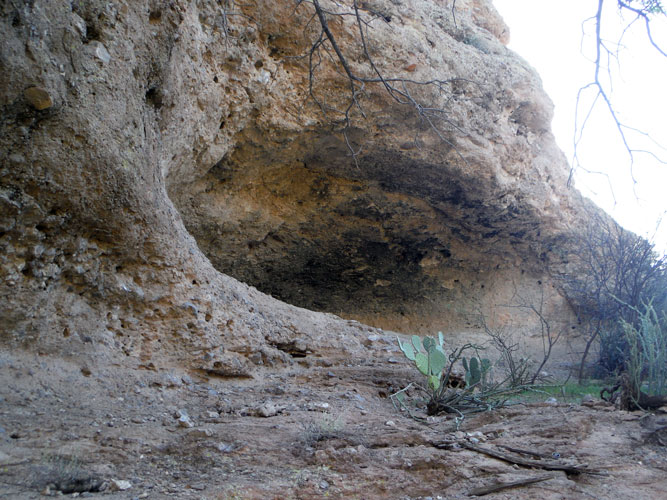 |
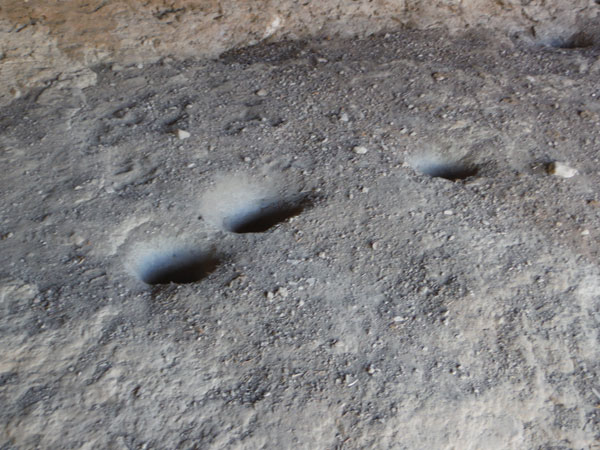 |
This was the haunted corral. Its construction of stacked rocks was not mentioned in either the Old West article or in Flieger's book.
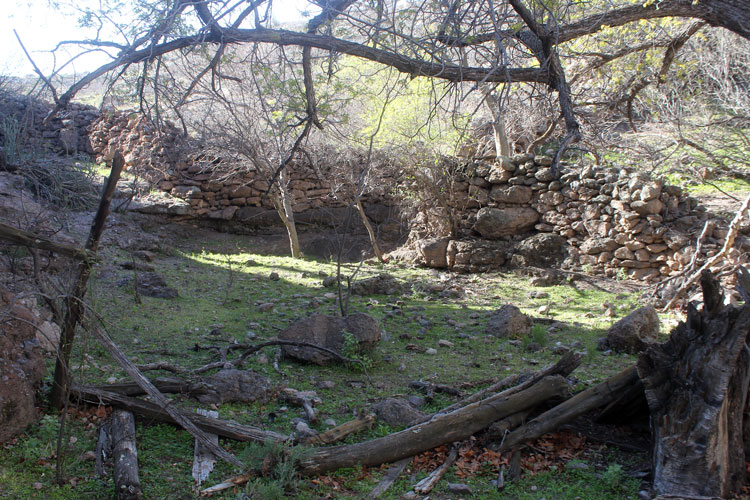 |
The governor of Arizona pardoned Apsey in 1897, seven years into his sentence. The news of Apsey's release was not received well. Griffith wrote that he "immediately disappeared". Other authors claimed that he remained in the Yuma area after his release. A friend of mine has found that he traveled to Tahiti. Jo Flieger, in both the Old West Magazine article, and in his book, stated that Old Man Apsey actually made a return trip to the Haunted Corral after his stint in prison.
Flieger believed that Apsey returned to recover a treasure hidden on the large rock formation near the Haunted Corral that was called "El Capitan". This black and white photo, which shows the edge of the rock formation , was included in the 1964 magazine article. The second photo below is a current view.
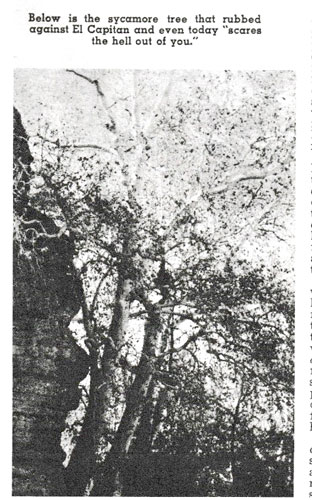 |
 |
The two versions of Apsey's return are so different from one another.....
A. The Recovery of the Apsey Treasure as described in 1964-
One night while riding the trail
towards the Haunted Corral, Flieger caught a glimpse of a man "shinnying
up the face of El Capitan where a branch of the giant sycamore
rubbed against the rock." Before he could get close
enough to identify the figure, the man had disappeared. Curious
about what was going on, Flieger made his way to the top of the
rock formation. "There, he found a good lasso rope tied to a
rock spur. He pulled it up, estimating the length to be around 40’.
It had a seaman’s overhand knot about every two feet of its
length." Flieger decided to see what was down the
cliff at the end of the rope. Using the knots, he lowered himself
down to a small cave that was not visible from the ground. A
lighted match "revealed a tin can which he thrust inside his
shirt, then reached in again…...he saw what
appeared to be a gold coin…..After finding one more, a
silver one, he was satisfied the cave was empty" and made
his way back to the top of the cliff. There he inspected his
finds, "One, was a U.S. double eagle dated 1885. The second
coin was a Republic of Mexico Ocho Reales ‘dobe dollar dated
1843. The container was a five-pound size Clabber Girl Baking
Powder Can." Flieger figured that the shadowy
figure had been old man Apsey who had returned to the Haunted
Corral to recover his stash hidden many years before…..
B. The Recovery of the Apsey Treasure as described by Flieger in 1991-
"I discovered that the moaning sounds at the Haunted Corral were caused by the limb of a giant sycamore, rubbing against the face of El Capitan when the winds made the tree sway a little, and decided to cut off the offending limb." With no ladder, Flieger went to the top of the rock formation, tied a rope to a mesquite and lowered himself to the limb of the tree. He noticed a hole in the rock wall. "The hole wasn’t very big, maybe eight or ten inches across, and I reached in and pulled out a large-size baking tin which was empty. I felt around on the floor of the hole and dragged out a collection of coins. Some were English, some Canadian, and some Mexican. They weren’t worth much, but I put them in my pocket as souvenirs. I had discovered Apsey’s hiding place…….Obviously, he had taken his gold coins with him and left the junk behind…...I had put some knots along the rope to make the climb easier. I assume Apsey got to his treasure hole the same way I did…..."
What else is there at Apsey Camp? The site was used by a series of ranchers for many years after Apsey disappeared. Neither Flieger or Griffith provided much of a description of the location from those later times.
Nearby is an enclosure made from mesquite. In 1937, Henry Towner was ambushed as he opened a gate to let a herd of cattle through. His wife heard the shots and ran from their shack to see what was happening. With his last words, Towner told his wife that he had been shot by Jo Flieger. Flieger was subsequently arrested. He was only released after a young cowboy came forward and confessed to the crime. The circumstances of the incident, and the solution of the murder were quite controversial. Whether Flieger was actually innocent or guilty was debated for many years afterward. It is interesting that in the Old West article, the real names of the people involved were used. In Flieger's book, pseudonyms were assigned....
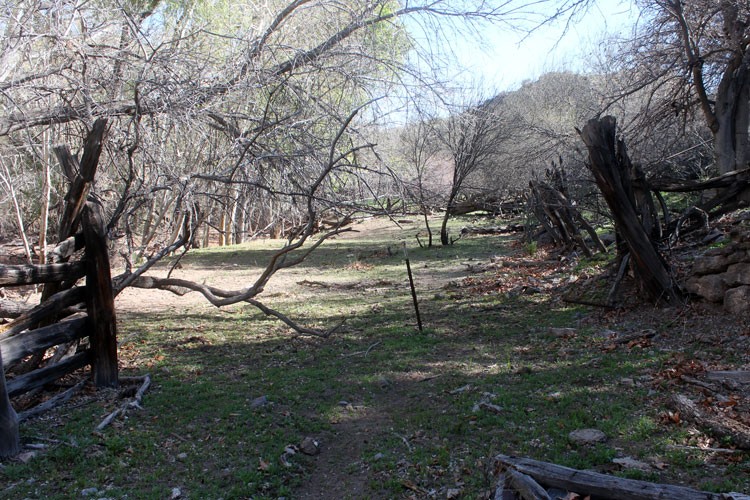 |
 |
This old water pump, manufactured by the Byron Jackson Pump Company, took water from Ash Creek and transferred it to a water tank nearby.
 |
All that remains of an old cabin/shack are the foundation stones. There are several bedframes in the "yard" around the cabin site. Did Apsey and the family really remain in the cave for the duration of their stay or could this have become their residence? The Towners did have a shack here in the 1930s.
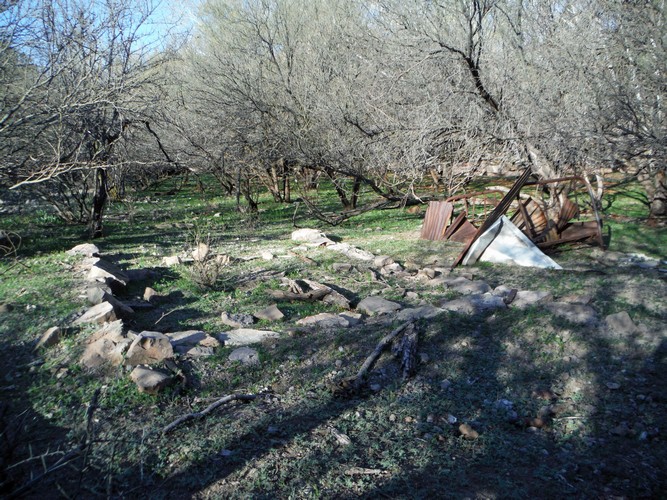 |
A hand dug well is not far away. It appears that strips of corrugated iron were used as the forms for the concrete base.
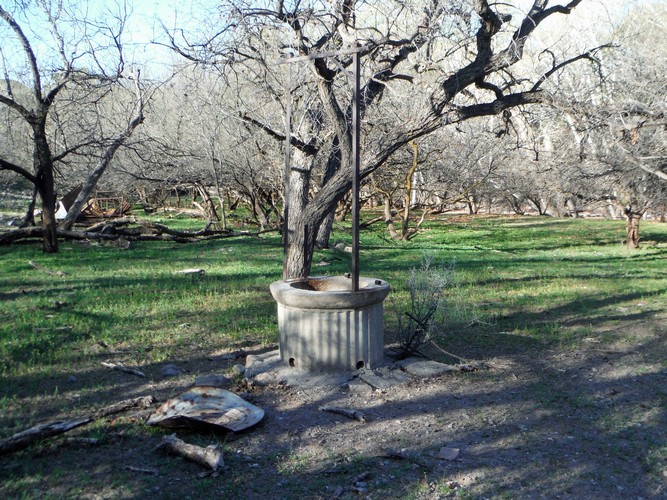 |
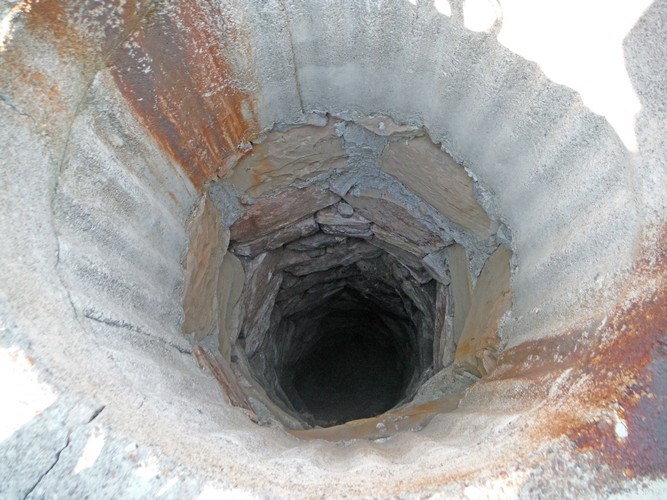 |
This large area would have been a very suitable site for Apsey's gardens.
 |
Ash Creek at Apsey Camp is a very scenic location. There are many large trees and permanent water. Below the camp, there are other rock shelters. My plans are to return and walk more of this canyon.
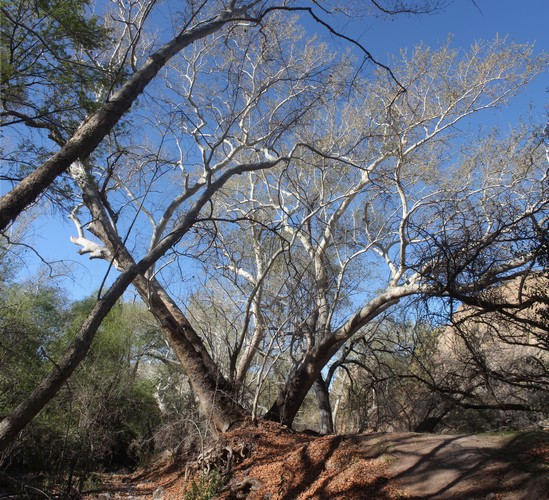 |
 |
 |
Ash Creek and Apsey Camp are a part of the Mineral Strip unit of the San Carlos Apache Reservation. Signs on the access road indicate that hiking and camping are allowed by nonmembers who have the reservation's recreation permits. Elsewhere, the tribe is very strict about visitors having those. The tribe is also adamant that ATVs are not allowed on their lands. I purchase the permits at a Circle K in Globe.
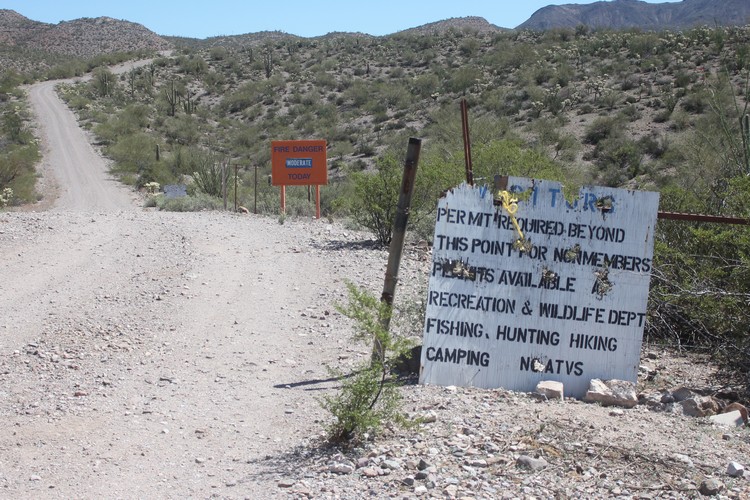 |